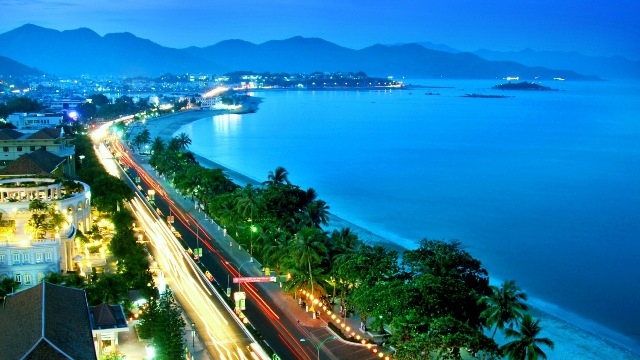


|
A view of Da Nang city, central Vietnam.
The information was announced at a Vietnam tourism
promotion programme, launched in the capital city of New Delhi, India, by
Vietnam National Administration of Tourism (VNAT) in collaboration with the
Embassy of Vietnam in India.
Speaking at the launch, VNAT Deputy Head Ngo Hoai Chung
said that the Vietnam-India tourism cooperation has seen significant
developments in recent years, along with the development of the traditional
friendship and comprehensive strategic partnership between the two countries,
as many bilateral and multilateral tourism promotion activities have been
implemented effectively, attracting the participation of a large number of
agencies, associations and tourism enterprises from the two countries.
Vietnam has become an increasingly popular destination for
Indian tourists and the South Asian country has been one of the most popular
tourist destinations for Vietnam, Chung said, adding that during a visit to
Vietnam by Indian President Narendra Modi in January this year, tourism
cooperation was one of the key topics under discussion.
Activities to promote Vietnam tourism in this market have
been deployed periodically, such as market research, product promotion, the
organisation of fairs and exhibitions, as well as field trips for press
agencies and tourism enterprises of the two sides. The VNAT always cooperates
closely with the two nations’ embassies and enterprises in organising
conferences on tourism and aviation cooperation, while welcoming Indian film
crews to Vietnam in order to survey the country and share experience to build
new products, Chung stated.
The VNAT official informed the Indian side on Vietnam’s
advantages in tourism, such as the long coastline of over 3,200 km, with
beautiful beaches, richness in culture, diversity with UNESCO-recognised
heritages and unique cuisine, together with an international standard,
high-class system of hotels, restaurants, resorts and golf courses.
He also affirmed that Vietnam is committed to providing the
best quality tourism services and products to meet the needs of Indian
travelers, as well as providing the best conditions for tourism businesses
from both side to cooperate in this field.
At the programme, Vietnamese tourism businesses introduced
their specialty tourism products and spent time exchanging and seeking
opportunities to cooperate with the Indian side. The latter also expressed
their interest in Vietnam’s tourism, as well as the untapped potential of
this market.
The Vietnam’s tourism promotion programme will continue to
be held in Mumbai, one of India's most dynamically growing cities and also
the cinema capital of the South Asian country.
From 2010 to 2016, the number of Indian visitors to Vietnam
grew impressively, from 33,000 in 2010 to 85,000 in 2016, an average increase
of 17% per year. In 2016 alone, Indian visitors to Vietnam increase by 30%
compared to 2015, but this number only accounts for roughly 3% of India's 2
million visitors to other ASEAN countries in 2016.
On the occasion, the VNAT delegation had a working session
with the host Ministry of Tourism, in which VNAT Deputy Head Ngo Hoai Chung
suggested that the Indian side creates favourable conditions for early
opening of direct flights between the two countries, while facilitating
tourism promotion and strengthening the connection between the two countries'
tourism agencies.
Indian Director General of Tourism Satyajeet Rajan
expressed his hope that the two sides would strengthen their cooperation in
human resources development in the field and agreed on the importance of the
establishment of a direct flight between the two countries in order to
increase Indian tourists to Vietnam and vice versa. He also pledged India’s
support to promote tourism promotion of both sides.
|
Source:
NDO